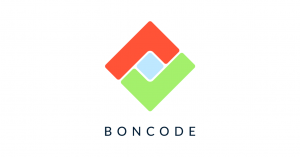Increased use of third-party and open-source code can lead to faster and more cost-effective software development. But it also makes software vulnerable to malicious code, bugs, or malware, leaving the door open to cyberattacks. The challenge is how to benefit from open-source code, while mitigating its risks.
With a Software Bill Of Materials (SBOM) – an inventory of components, dependencies, and technical information – companies can track the origin of different components and quickly diagnose the source of any vulnerabilities. Here’s what you need to know.
What’s an SBOM?
You might be familiar with the term ‘Bill Of Materials’ (BOM). In the manufacturing sector, the BOM lists all the parts and materials needed to manufacture a physical product, including instructions and naming suppliers.
A BOM is part of the design phase because manufacturers need to purchase parts and materials first in order to build their product. If there’s a problem with a specific component, manufacturers can easily trace it back to the original source in their supply chain.
On the other hand, a Software Bill Of Materials (SBOM) works slightly differently. Open source and third-party code can be added at any stage of development, giving engineers libraries of ready-made components that can help speed up development.
Unlike manufacturers of physical products, software engineers can bring in ready-made components at any time. This means software code is continuously vulnerable to new threats.
Why is an SBOM beneficial?
Although it doesn’t entirely eliminate the threat of malicious code, an SBOM provides several benefits to software companies. An SBOM:
- Enables rapid response to security incidents and software flaws
- Supports troubleshooting and debugging by identifying software components
- Enhances cybersecurity by identifying and tracking software vulnerabilities
- Facilitates compliance with licensing and regulatory requirements
- Promotes trust and accountability in software development and distribution
- Reduces legal and financial risks associated with unlicensed or outdated software
- Streamlines software inventory management and version control
- Improves supply chain transparency and risk assessment
- Enhances collaboration and communication among development teams
Measure and manage security risks
These days, it’s common practice for companies to outsource software development to different offshore providers. Software engineers and information architects are all under pressure to deliver.
Using pre-built open-source components saves time and money, but leaves the door open to security risks, such as using outdated versions. Without a clear overview of what’s inside your code, there’s also the danger of making unintentional unauthorized use of third-party software or breaching its terms of use.
An SBOM enables companies to better understand what’s in their code. With an SBOM from BonCode you can keep track of components over time, as they are added. This includes ‘approved’ suppliers of components, alongside unauthorized additions.
With BonCode, you can visualize low, medium, and high risks based on the standards set by leading global cybersecurity organizations. Having this visibility and transparency over software code makes finding and fixing issues much quicker compared with manual approaches.
With software monitoring from BonCode, companies can measure and manage risk within their codebase whilst enjoying the speed and innovation of pre-built open source, and third-party components. Book a demo to discover more.





